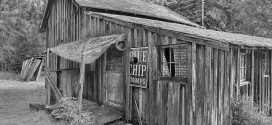With the significant declines over past two years, the demise of distress sales as a matter pf concern has seemed a matter of a few months, until now. Like a zombie rising from a grave, distress sales of various sorts have returned this winter and still account for one in four home sales, according to Clear Capital.
February national price gains were notably lower over the quarter, down to 1% from 2.5%, the largest drop since 2010, when gains were coming off the first time homebuyer tax credit.
One reason is national REO saturation ticked up 1.8 percentage points from 20.9% to 22.7%, the largest gain since January 2012. Declining quarterly gains coupled with rising REO saturation suggest home prices could see quarterly declines within the next few months. Graph 2 shows how price declines can directly correlate with rising REO saturation over sustained periods.
With one month of winter to go, moderating prices in the bottom half of the lowest performing metro markets suggest near-term price declines are not out of the question. In February, three out of 15 reported slight declines over the quarter. The remaining 12 metros were mostly flat with not one market reaching 1% growth.
Jacksonville’s REO saturation rose by 3.2 percentage points over the quarter to 43.2%. This is the highest rate of distressed sale activity across the largest 50 metropolitan areas, and the largest quarterly increase for Jacksonville since early 2011. Under the pressure of rising distressed activity, price gains have cooled dramatically. Current quarterly gains of just 0.7% represent the lowest rate of growth for Jacksonville since mid-2011.
“A few concerning indicators surfaced in February’s home data,” said Dr. Alex Villacorta, vice president of research and analytics at Clear Capital. “Our early data shows national quarterly price gains are falling at a rapid pace and suggest overall prices could dip into negative territory soon if current conditions continue. In light of expected waning investor demand, higher rates of distressed sale activity signal that the housing market still must withstand distressed sales, which account for nearly one in four transactions. Since the market fallout in 2006, home prices have dramatically declined during sustained periods of rising distressed sale activity. Over the last two years, however, rising distressed sales have been offset by investor demand, which is not guaranteed to be present in 2014.
Though it is not unusual to see rising distressed activity over the winter months, the current housing picture gives reason to be concerned. If we don’t see a correction come spring, the housing market may be in for a long year, Villacorta said.
RealtyTrac reported this week that non-performing FHA loans are a fast-rising source of “invisible” short sakes and REOs. More than72,000 nonperforming loans insured by the Federal Housing Administration have been sold since 2010 as part of the Distressed Asset Stabilization Program (DASP) administered by the Department of Housing and Urban Development — which posts the results the sales on its website. But there is no public record for sales of loans not insured by the FHA, leaving an unreported gap of many more NPL sales — given that the FHA share of mortgage originations was just 30 percent of all originations even at its peak in recent years.
‘We were in the closing department atChase and they said, ‘well it’s sold,’” Karl Falk, president and CEO president and CEO of Summit Mitigation Services.
“We’re still very, very busy and yet every report you read in the news is that nonperforming notes are reducing significantly, foreclosures are down and everybody’s happy go lucky that the real estate market is back,” said Falk, who theorized that part of the reason public foreclosure notices are not being filed may tie back to problems documenting what company actually owns the loan.
Non-performing FHA Loans
Source: RealtyTrac
 RealEstateEconomyWatch.com Insight and Intelligence on Residential Real Estate
RealEstateEconomyWatch.com Insight and Intelligence on Residential Real Estate

One comment
Pingback: Will Zombie Distress Sales Ruin the Party? | Belair Realty